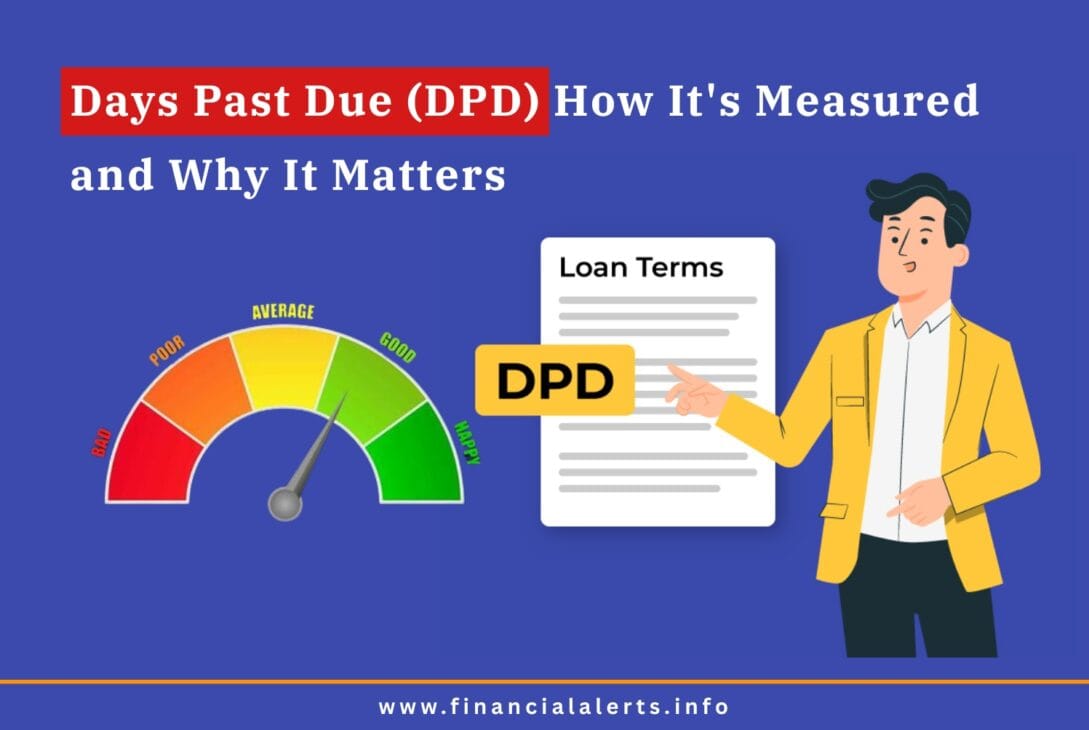When you borrow money whether through a credit card, personal loan, or mortgage each payment has a set due date. If you miss that date, you enter the world of Days Past Due or DPD. This single number tells lenders how many days you are late on your payment. A small slip might not seem serious, but DPD can affect everything from late fees to your ability to get credit in the future.
What Exactly Is DPD?
DPD stands for Days Past Due. It counts each day after your payment due date until the day you actually pay. If your bill is due on July 1 and you pay on July 4, your DPD is three. On the due date itself, DPD is zero. As you slip into higher DPD numbers, you move from “on time” toward “late” in the lender’s eyes.
Why Lenders Watch DPD Closely
Banks and other lenders use DPD as a quick signal of payment trouble. When a borrower’s DPD rises, even by a few days, it tells the lender that money might be tight. If many loans show increasing DPD, the lender may pause new lending or tighten rules. In that sense, DPD works like a health check for a lending portfolio low DPD means healthy borrowers high DPD hints at trouble ahead.
How to Calculate Your DPD
Figuring out your DPD is easy. Just subtract the due date from the actual payment date:
DPD = Actual Payment Date – Scheduled Due Date
- Pay on time → DPD = 0
- One day late → DPD = 1
- Ten days late → DPD = 10
Keep in mind many lenders offer a small grace period often 1–3 days before they label you “late” or report your DPD to credit bureaus.
DPD “Buckets” or Stages
Rather than tracking every single day lenders often group DPD into stages:
- 1–29 days past due: A minor late fee, small credit effect.
- 30–59 days past due: Bigger fee, reported to credit agencies, interest may rise.
- 60–89 days past due: Serious warning, lender may start recovery steps.
Consequences of Rising DPD
- Late Payment Fees: Even a small miss can trigger a fixed fee often ₹100–₹500 per occurrence.
- Higher Interest Rates: Lenders may hike your rate, making future balances costlier.
- Credit Score Drop: A 30-day late entry can shave off 50–100 points from your score.
- Reduced Credit Limits: Your available credit may shrink, or new applications could be denied.
- Collections & Legal Action: Extended delays (60+ days) can lead to third-party collection calls or even court cases.
Simple Steps to Keep DPD at Zero
- Set Up Auto-Pay: Automate at least your minimum due each month.
- Phone Alerts: Put a reminder 3–5 days before each due date.
- Emergency Savings: Even ₹5,000 as a cushion can cover surprises.
- Ask for a Grace Period: If you know you’ll miss the date, call your lender.
- Track Every Bill: Use a basic spreadsheet or money-management app to list all payment dates.
Final Thoughts
In credit and lending, small numbers have big meaning. A DPD of one or two may not feel harmful at the moment, but it can snowball into expensive fees and lower credit ratings.

I am a digital marketing executive as well as content writer in the income tax and credit cards category. My goal is to provide simple, interesting and reliable information to readers through my articles so that they always stay updated with the world of income tax and credit cards.




OK9casino… Last but not least. Let’s see if this stacks up well against other brands! Let’s inspect ok9casino and assess!